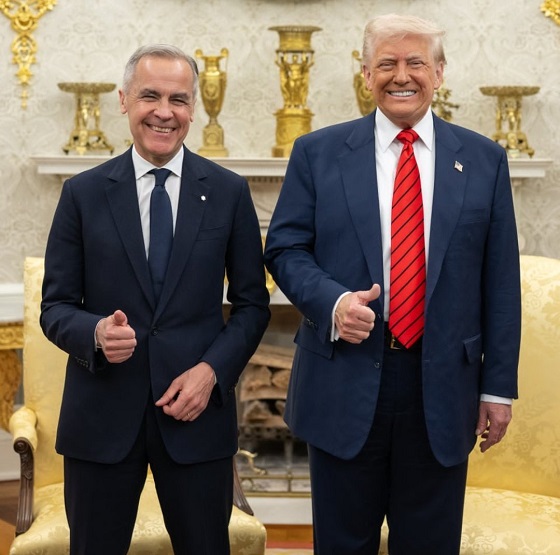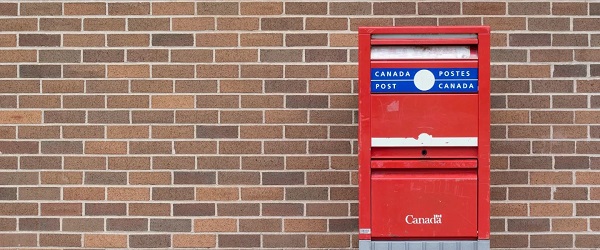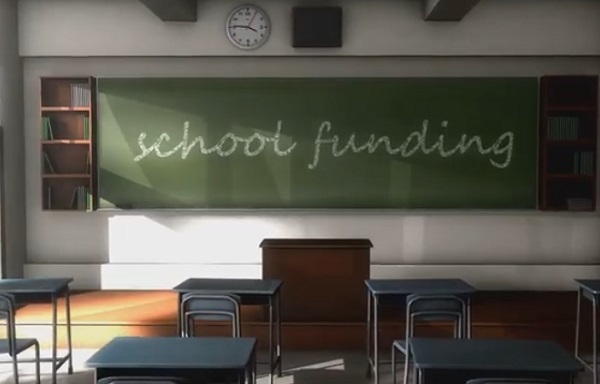National
Fleecing the Electorate: Timeline of a Campaign Built on Fear

A crisis too perfect to be true was amplified with Trudeau’s hot mic and Bob Rae’s Arctic map, planting the seeds of fear at just the right time.
The evidence is now clear. In the 2025 Canadian federal election, the Trudeau Liberals—under new leader Mark Carney—knowingly amplified a far-fetched threat of American annexation to frame the race as a battle for national survival. Voters were told that Donald Trump wanted to “break and own” Canada. What they weren’t told was that Carney had privately reassured Trump that his heated stump speech rhetoric was just for show.
If it weren’t so chilling, it might read as farce—poorly acted political theatre at the highest level.
A few events, in retrospect, appear as the keystones of what may have been a coordinated, disinformation-driven campaign. A campaign, with the benefit of hindsight, that dovetailed precisely with Chinese intelligence narratives.
Prime Minister Justin Trudeau, days before stepping down and apparently ‘feathering a pass’ to Mark Carney—a hockey metaphor that never surfaced in the subsequent ‘elbows up’ campaign—appeared at a Toronto business summit and, conveniently, was caught on a “hot mic.” He warned, in casual tones, that Donald Trump “very much” wanted Canada’s resources, and that “absorbing our country” was “a real thing.” The timing was surgical.
Equally suspicious was Canada’s UN Ambassador and long-time Liberal heavyweight Bob Rae posting a distorted Arctic map on X, showing Canada and Greenland fully swallowed by a U.S. flag. His caption: “Theft by force.”
The narrative had been cast: the United States was preparing to take Canada. The Liberals would defend the nation. And anyone who doubted that premise was complicit in national surrender.
It began with an offhand comment at Mar-a-Lago in late 2024—Trump joking that if Canada couldn’t meet its defense commitments, perhaps it should become the 51st state. By January, the joke had mutated into a real threat: Trump threatened 25% tariffs on Canadian goods and linked them to Canada’s failure to secure its borders. The Liberals seized on the moment.
Then came the hot mic leak.
In February, Prime Minister Trudeau, in a supposedly closed-door session, was caught warning that Trump’s “annexation” ambitions were “a real thing.” The remark was conveniently on-message, almost too perfectly timed as Carney prepared to take the reins. By March, with Trump’s tariffs in force and sovereignty rhetoric rising, B.C. Premier David Eby declared Trump was “campaigning against Canada’s independence.”
On March 15, Bob Rae posted his now-infamous map depicting Canada fully absorbed into the U.S. It wasn’t just visual. His accompanying tweet read:
“To emphasize, this is not about borders, or fentanyl. This is about a colossal land, water and resource grab. The tariffs are intended to weaken so this theft can take place. We’re not talking ‘purchase’ or ‘buying’. We’re talking theft by force. Fighting back will be hard, but it is the fight of our lives.”

Rae, a senior diplomat, had crossed the line into domestic campaign messaging. And it aligned perfectly with the pitch Carney was about to make.
Carney, newly installed as prime minister, wasted no time launching the “Elbows Up” campaign—framing the Liberals as the last line of defense against American imperialism. At every rally, Trump was the villain. Carney told Canadians, “We are in a fight for our country.”
Apparently, Beijing was too.
On April 7, 2025, the Security and Intelligence Threats to Elections (SITE) Task Force reported that Chinese state-affiliated accounts on WeChat had launched a coordinated “information operation” targeting the Canadian election. These accounts consistently amplified narratives portraying Carney as a principled defender of Canadian sovereignty against Trump’s alleged annexation ambitions. The operation, linked to the Chinese Communist Party’s Central Political and Legal Affairs Commission, was assessed to have likely influenced Chinese-Canadian communities in key ridings—potentially swaying votes.
Meanwhile, just days after Carney’s incendiary rhetoric began, he engaged in a private call with President Trump. According to CBC reporting, Trump once again raised the 51st-state concept. Carney made no mention of it in the official government readout. Only after CBC brought the issue to light did he publicly acknowledge that the annexation idea had, in fact, been raised.
Notably, this disclosure appeared to give new momentum to the Liberal campaign’s annexation narrative—despite indications that Trump had begun moderating his tone. What CBC’s report did not include, however—if one accepts as credible a subsequent account from National Post columnist John Ivison—was arguably more consequential. Ivison reported that during the same call, Carney assured Trump that the anti-Trump messaging was a strategic necessity, not a personal indictment, and further characterized Trump as a “transformational” leader. In public, Carney framed Trump as a direct threat to Canadian sovereignty. In private, according to this reporting, he extended praise.
The contrast was cemented after the vote.
On April 28, the Liberals secured a strong minority government. Carney celebrated by declaring, “Donald Trump wants to break us, so that America can own us.” But less than a week later, standing beside Trump in the Oval Office, Carney dropped the defiance. He called Trump “transformational,” credited him for tackling fentanyl, and pledged Canada would be a good partner. By mid-May, he confirmed Canada was in talks to join Trump’s “Golden Dome” missile shield.
Notably, the region invoked by Bob Rae’s tweet—the Arctic and Canadian North—sits squarely within the strategic focus of that same U.S. missile defense system. On May 21, China’s foreign ministry lashed out at the Golden Dome project, calling it a threat and urging Washington to abandon it. The Liberal campaign had warned Canadians of U.S. ambitions to seize Canadian land and militarize the Arctic—yet Carney now aligns with the very policy China condemns most. The contradiction is stark, and telling.
The question isn’t whether Trump’s actions posed a real challenge to Canada. His tariffs and rhetoric were aggressive and unprecedented. The question is whether the Carney Liberals exaggerated that threat, weaponized fear, and manipulated public sentiment to win an election—only to reverse course immediately after.
If that’s the case, then a more unsettling question follows: can Mark Carney’s pledges—either to Donald Trump or to the Canadian people—be trusted going forward?
The Canadian people were told they were voting to protect sovereignty. In reality, they voted for a narrative. The real strategy—only visible now—was to create a crisis, stoke national anxiety, and cast Carney as a saviour.
Canada faces real threats: hostile state networks, aggressive election interference from Beijing, economic sabotage, and intellectual property theft. The take-down of Nortel by Huawei still resonates globally as a cautionary tale. Fentanyl trafficking from Canadian soil is rising. At the same time, there is growing consensus that Canada must finally unleash its vast natural resources to strengthen its geopolitical position. What matters now is not whether Mark Carney can win votes—but whether he can govern.
He campaigned on the word build. But we can’t become a superpower on a foundation of disillusionment and trickery.
A cohesive, powerful, unified Canada must be built on clarity. Only fools build on foundations of shifting sand.
The Bureau is a reader-supported publication.
To receive new posts and support my work, consider becoming a free or paid subscriber.
Invite your friends and earn rewards
Business
Canada Post is failing Canadians—time to privatize it

From the Fraser Institute
By Jake Fuss and Alex Whalen
In the latest chapter of a seemingly never-ending saga, Canada Post workers are on strike again for the second time in less than a year, after the federal government allowed the Crown corporation to close some rural offices and end door-to-door deliveries. These postal strikes are highly disruptive given Canada Post’s near monopoly on letter mail across the country. It’s well past time to privatize the organization.
From 2018 to the mid-point of 2025, Canada Post has lost more than $5.0 billion, and it ran a shortfall of $407 million in the latest quarter alone. Earlier this year, the federal government loaned Canada Post $1.034 billion—a substantial sum of taxpayer money—to help keep the organization afloat.
As a Crown corporation, Canada Post operates at the behest of the federal government and faces little competition in the postal market. Canadians have nowhere to turn if they’re unhappy with service quality, prices or delivery times, particularly when it comes to “snail mail.”
Consequently, given its near-monopoly over the postal market, Canada Post has few incentives to keep costs down or become profitable because the government (i.e. taxpayers) is there to bail it out. The lack of competition also means Canada Post lacks incentives to innovate and improve service quality for customers, and the near-monopoly prohibits other potential service providers from entering the letter-delivery market including in remote areas. It’s clearly a failing business that’s unresponsive to customer needs, lacks creativity and continuously fails to generate profit.
But there’s good news. Companies such as Amazon, UPS, FedEx and others deliver more than two-thirds of parcels in the country. They compete for individuals and businesses on price, service quality and delivery time. There’s simply no justification for allowing Canada Post to monopolize any segment of the market. The government should privatize Canada Post and end its near-monopoly status on letter mail.
What would happen if Ottawa privatized Canada Post?
Well, peer countries including the Netherlands, Austria and Germany privatized their postal services two decades ago. Prices for consumers (adjusted for inflation) fell by 11 per cent in Austria, 15 per cent in the Netherlands and 17 per cent in Germany.
Denmark has taken it a step further and plans to end letter deliveries altogether. The country has seen a steep 90 per cent drop in letter volumes since 2000 due to the rise of global e-commerce and online shopping. In other words, the Danes are adapting to the times rather than continuing to operate an archaic business model.
In light of the latest attempt by the Canadian Union of Postal Workers to shakedown Canadian taxpayers, it’s become crystal clear that Canada Post should leave the stone age and step into the twenty-first century. A privately owned and operated Canada Post could follow in the footsteps of its European counterparts. But the status quo will only lead to further financial ruin, and Canadians will be stuck with the bill.
Education
Classroom Size Isn’t The Real Issue

From the Frontier Centre for Public Policy
The real challenge is managing classrooms with wide-ranging student needs, from special education to language barriers
Teachers’ unions have long pushed for smaller class sizes, but the real challenge in schools isn’t how many students are in the room—it’s how complex those classrooms have become. A class with a high proportion of special needs students, a wide range of academic levels or several students learning English as a second language can be far more difficult to teach than a larger class where students are functioning at a similar level.
Earlier this year, for example, the Elementary Teachers’ Federation of Ontario announced that smaller class sizes would be its top bargaining priority in this fall’s negotiations.
It’s not hard to see why unions want smaller classes. Teaching fewer students is generally easier than teaching more students, which reduces the workload of teachers. In addition, smaller classes require hiring more teachers, and this amounts to a significant financial gain for teachers’ unions. Each teacher pays union dues as part of membership.
However, there are good reasons to question the emphasis on class size. To begin with, reducing class size is prohibitively expensive. Teacher salaries make up the largest percentage of education spending, and hiring more teachers will significantly increase the amount of money spent on salaries.
Now, this money could be well spent if it led to a dramatic increase in student learning. But it likely wouldn’t. That’s because while research shows that smaller class sizes have a moderately beneficial impact on the academic performance of early years students, there is little evidence of a similar benefit for older students. Plus, to get a significant academic benefit, class sizes need to be reduced to 17 students or fewer, and this is simply not financially feasible.
In addition, reducing class sizes means spending more money on teacher compensation (including salaries, pensions and benefits). Also, it leads to a decline in average teacher experience and qualifications, particularly during teacher shortages.
As a case in point, when the state of California implemented a K-3 class-size reduction program in 1996, inexperienced or uncertified teachers were hired to fill many of the new teaching positions. In the end, California spent a large amount of money for little measurable improvement in academic performance. Ontario, or any other province, would risk repeating California’s costly experience.
Besides, anyone with a reasonable amount of teaching experience knows that classroom complexity is a much more important issue than class size. Smaller classes with a high percentage of special needs students are considerably more difficult to teach than larger classes where students all function at a similar academic level.
The good news is that some teachers’ unions have shifted their focus from class size to classroom complexity. For example, during the recent labour dispute between the Saskatchewan Teachers’ Federation (STF) and the Saskatchewan government, the STF demanded that a classroom complexity article be included in the provincial collective agreement. After the dispute went to binding arbitration, the arbitrator agreed with the STF’s request.
Consequently, Saskatchewan’s new collective agreement states, among other things, that schools with 150 or more students will receive an additional full-time teacher who can provide extra support to students with complex needs. This means that an extra 500 teachers will be hired across Saskatchewan.
While this is obviously a significant expenditure, it is considerably more affordable than arbitrarily reducing class sizes across the province. By making classroom complexity its primary focus, the STF has taken an important first step because the issue of classroom complexity isn’t going away.
Obviously, Saskatchewan’s new collective agreement is far from a panacea, because there is no guarantee that principals will make the most efficient use of these additional teachers.
Nevertheless, there are potential benefits that could come from this new collective agreement. By getting classroom complexity into the collective agreement, the STF has ensured that this issue will be on the table for the next round of bargaining. This could lead to policy changes that go beyond hiring a few additional teachers.
Specifically, it might be time to re-examine the wholesale adoption of placing most students, including those with special needs, in regular classrooms, since this policy is largely driving the increase in diverse student needs. While every child has the right to an education, there’s no need for this education to look the same for everyone. Although most students benefit from being part of regular academic classes, some students would learn better in a different setting that considers their individual needs.
Teachers across Canada should be grateful that the STF has taken a step in the right direction by moving beyond the simplistic demand for smaller class sizes by focusing instead on the more important issue of diverse student needs.
Michael Zwaagstra is a senior fellow with the Frontier Centre for Public Policy.
-

 Opinion2 days ago
Opinion2 days agoJordan Peterson needs prayers as he battles serious health issues, daughter Mikhaila says
-

 COVID-192 days ago
COVID-192 days agoDevastating COVID-19 Vaccine Side Effect Confirmed by New Data: Study
-

 Censorship Industrial Complex2 days ago
Censorship Industrial Complex2 days agoWinnipeg Universities Flunk The Free Speech Test
-

 Red Deer1 day ago
Red Deer1 day agoThe City of Red Deer’s Financial Troubles: Here Are The Candidates I Am Voting For And Why.
-

 Crime2 days ago
Crime2 days agoThe Bureau Exclusive: Chinese–Mexican Syndicate Shipping Methods Exposed — Vancouver as a Global Meth Hub
-

 Crime2 days ago
Crime2 days agoCanadian Sovereignty at Stake: Stunning Testimony at Security Hearing in Ottawa from Sam Cooper
-

 Business1 day ago
Business1 day agoCanada Post is failing Canadians—time to privatize it
-

 Haultain Research2 days ago
Haultain Research2 days agoInclusion and Disorder: Unlearned Lessons from Palestinian Protests








